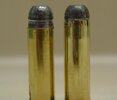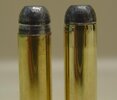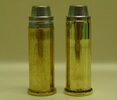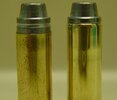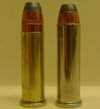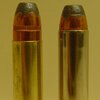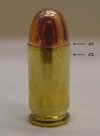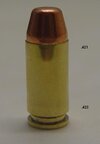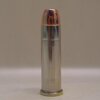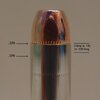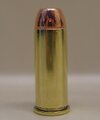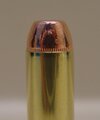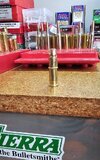You are using an out of date browser. It may not display this or other websites correctly.
You should upgrade or use an alternative browser.
You should upgrade or use an alternative browser.
What is the advantage of seating and crimping separately
- Thread starter Mountainman2
- Start date
LiveLife
Member
I took photography in High School and did yearbook in college and did all the portrait pictures and most of collage page pictures using full manual Nikon FM 35mm film camera (I would buy bulk film in 100 foot rolls and filled film cartridges in makeshift "dark room" inside college dorm closet) - https://filmphotographystore.com/collections/bulk-film-35mm-100ft-rollsWell with all that loading when did you find time to learn how to be such a fine photographer?
But these days, it's just quick "point and shoot" with smartphone camera and believe me, pictures I posted in recent years were rather "crude/rough". I am currently using Samsung Galaxy A12 with 4 cameras and ultra macro zoom does a good job of being crude microscope to show details like powder granules.
Friend of mine is a professional photographer who takes classic/custom car magazine photos and he would laugh at pictures I post on THR if he saw them (Below is sample from his gallery with hallmark background reflection on paint) - https://www.rickamado.com/gallery#!/gallery/customs
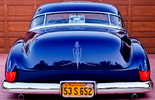
I took a little more care with picture below to show details of loaded rounds (Especially nose profile/ogive and hollow point difference) using curved copy paper as background and indirect lighting with built-in smartphone camera.
Coming back "on topic" to thread discussion, yes, these were seated and taper crimped in same step using Lee combination seat/crimp die with .378" taper crimp. I have Dillon, Hornady, RCBS dies and multiple sets of same caliber Lee dies and have seated and taper crimped in separate steps but seating/taper crimping in the same step is fine with most bullets I use.
Last edited:
gwpercle
Member
The problem with the roll crimp - seating in one step is as the bullet is moving down (seating) the case mouth is rolling in (crimping) and a lot of dies shave bullet metal off the bullet and with a lead bullet this shaved lead is exaggerated and can be trapped under the crimp ... it may hinder chambering and adds to leading .
Semi-auto's with a taper crimp are not so bad about shaving bullet metal off so one step seating and taper crimping isn't a problem .
Just watch the roll crimps on revolver bullets ... if shaving is a problem then seat in one step and crimp in a second step . I simply adjust my seat-crimp die to do one step , then the other ... adjusting a die isn't hard .
Gary
Semi-auto's with a taper crimp are not so bad about shaving bullet metal off so one step seating and taper crimping isn't a problem .
Just watch the roll crimps on revolver bullets ... if shaving is a problem then seat in one step and crimp in a second step . I simply adjust my seat-crimp die to do one step , then the other ... adjusting a die isn't hard .
Gary
It separates the adjustments. Smart.Hornady came out with a new seater die for 9mm, 40 S&W, and 45 ACP that separates the crimp and seat functions on the die.
LiveLife
Member
Very clear pictures of roll crimp!Bullets like these are easy to seat and crimp in one step if brass case lengths are at least close
LiveLife
Member
I agree.On Taper "crimped" auto cases there is such little bullet movement as it gets the "crimp" it isn't an issue.
If you are shaving bullets in auto calibers taper crimping you are way overdoing the "crimp'.
LiveLife
Member
Beautiful pictures.If you want a medium to heavy taper crimp on a revolver caliber, crimping in a second step is a must.
I think we could almost make out your face in the reflection.
GeoDudeFlorida
Member
- Joined
- Dec 1, 2020
- Messages
- 11,263
I suck at photography. When you look like me you tend to avoid cameras. Darn things are always breaking.I took photography in High School and did yearbook in college and did all the portrait pictures and most of collage page pictures using full manual Nikon FM 35mm film camera (I would buy bulk film in 100 foot rolls and filled film cartridges in makeshift "dark room" inside college dorm closet" - https://filmphotographystore.com/collections/bulk-film-35mm-100ft-rolls
But these days, it's just quick "point and shoot" with smartphone camera and believe me, pictures I posted in recent years were rather "crude/rough". I am currently using Samsung A12 with 4 cameras and ultra macro zoom does a good job of being crude microscope to show details like powder granules.

Friend of mine is a professional photographer who takes classic/custom car magazine photos and he would laugh at pictures I post on THR if he saw them (Below is sample from his gallery with hallmark background reflection on paint) - https://www.rickamado.com/gallery#!/gallery/customs
View attachment 1165187
I took a little more care with picture below to show details of loaded rounds (Especially nose profile/ogive and hollow point difference) using curved copy paper as background and indirect lighting with built-in smartphone camera.
Coming back "on topic" to thread discussion, yes, these were seated and taper crimped in same step using Lee combination seat/crimp die with .378" taper crimp. I have Dillon, Hornady, RCBS dies and multiple sets of same caliber Lee dies and have seated and taper crimped in separate steps but seating/taper crimping in the same step is fine with most bullets I use.

As for crimping, it depends as much on how I’m going to store the loaded rounds as how I’m going to use them. Sometimes I use a heavy crimp, sometimes no crimp. Sometimes I just unroll the flair, sometimes I roll into the body of the bullet. It just depends. There is no one and only right way to do this or that, there’s what works and what doesn’t. Learning the difference takes practice and experience. You don’t get either from reading a post on the internet.
Try one way, then another until you find what works for you. Then stick with it until it doesn’t work anymore. Change is okay. Change for the sake of change is risky. But it can also be okay.
Remember to apply the first rule: Don’t do what I do because it probably won’t work for you.
Last edited:
PWC
Member
IF you can get your set up to seat correctly and crimp at the end of the stroke without shaving a scant lead ring off the bullet, then great.
I had one single stage press for all the calibers I loaded, so changing / adjusting dies was a fact of Reloading.
After trying to find the sweet spot for both seat and crimp in one stroke after each die change, I stopped and went to 2 steps, reloading once again became simplier and more fun.
There is no Xtra cost and time spent is really negligible. I didn't have to make a thousand rounds for the weekend.
I had one single stage press for all the calibers I loaded, so changing / adjusting dies was a fact of Reloading.
After trying to find the sweet spot for both seat and crimp in one stroke after each die change, I stopped and went to 2 steps, reloading once again became simplier and more fun.
There is no Xtra cost and time spent is really negligible. I didn't have to make a thousand rounds for the weekend.
I seat and crimp in separate dies because of my personal loading practices.
I like to play with different bullet profiles. That means that they will have different nose/ogive where they contact the seating stem. To maintain correct OAL for feeding in my guns I often have to adjust seating depth. By using separate dies to seat and crimp, I don't have to mess with the setting of my crimp die.
I like to use the Redding Competition Seating die to help alignment and avoid shaving/bulging between the case and coated bullet. That die doesn't offer the ability to crimp...so it has just become part of my process to crimp in a separate die
I like to play with different bullet profiles. That means that they will have different nose/ogive where they contact the seating stem. To maintain correct OAL for feeding in my guns I often have to adjust seating depth. By using separate dies to seat and crimp, I don't have to mess with the setting of my crimp die.
I like to use the Redding Competition Seating die to help alignment and avoid shaving/bulging between the case and coated bullet. That die doesn't offer the ability to crimp...so it has just become part of my process to crimp in a separate die
When I got into reloading around 1980, I was led to believe by the magazine scribes that there were no seating dies with taper crimp rings machined in them. So, when I started loading 45 ACP, I bought a taper crimp die and crimped in a separate operation from seating. Seating and crimping in separate steps was a foregone conclusion.
That spread to other semi-auto cartridges and at the time Lee came out with a line of taper crimp dies.
(Apparently, there were some taper crimp seating dies available around 1980, I just was unaware of them.)
Anyway, I liked having seating and crimping in separate steps. I can adjust each operation separately without having effects on the other operation. I even do this will cases that require roll crimps.
The way I like loading on a progressive, I can have seating and crimping in separate operations but they happen at the same pull of the handle.
But, if you prefer to seat and crimp at the same step, have at it. It has worked for many for decades.
That spread to other semi-auto cartridges and at the time Lee came out with a line of taper crimp dies.
(Apparently, there were some taper crimp seating dies available around 1980, I just was unaware of them.)
Anyway, I liked having seating and crimping in separate steps. I can adjust each operation separately without having effects on the other operation. I even do this will cases that require roll crimps.
The way I like loading on a progressive, I can have seating and crimping in separate operations but they happen at the same pull of the handle.
But, if you prefer to seat and crimp at the same step, have at it. It has worked for many for decades.
Yes, pulling the seating stem will work but it makes for a inefficient reloading session. You waste time re-adjsuting the seating die at the next reloading session.yea, just pull the seat stem. I've done it both ways and both work. for whatever reason I tend to separate them, but I'm not in a hurry.
If you want to seat the bullet and crimp in separate operations, don't be so cheap, buy a crimp die. You will find the reloading process will go more quickly and smoothly.
At lunch, just cut out the "Mikidougal", "Burger King"or "Chick-fil-et" waffle fries for a meal or two and you'll have the cash to buy a dedicated crimp die.
lordpaxman
Member
- Joined
- Jun 4, 2011
- Messages
- 2,446
If what you have been doing works for you…. If it ain’t broke, don’t fix it.Is it worth the time and expense of buying a separate die. I have been doing both at the same time On my 357 and 45 revolvers and T/C hand guns.
Some die sets have separate seat and crimp dies, some don’t. I used to seat and crimp in one operation but separating them gives you the ability to change one without affecting the other.
sparkyv
Member
This:
I like to do them separately. I have a Lee 4 hole turret press.
higgite
Member
- Joined
- Dec 17, 2009
- Messages
- 2,087
Those dies aren't really new any longer, but they are handy if you load different bullets and/or COLs in the same caliber. I have them for 9mm and 45ACP. The beauty of it is you don't have to screw the die body in and out of the press to adjust the crimp. The seating adjustment and the taper crimp adjustment have the same pitch threads. So, if you want/need to adjust crimp but don't want to change seating depth, you can crank the crimp in however much you want and crank the seating depth back out an equal amount without messing with die lock rings, the die body, etc. Or you can just hold the seating stem so that it doesn't turn while you adjust the crimp. It's easier to do than it is to explain, but it's almost intuitive when you use the die.Hornady came out with a new seater die for 9mm, 40 S&W, and 45 ACP that separates the crimp and seat functions on the die. I've always used the Lee crimp dies, but in trying these out, worked well in all 3 calibers. Granted only used new brass to assume all were same length, haven't tried reloads on fired brass yet.
Ks5shooter
Contributing Member
Never an issue with taper crimp.Roll crimp however cases need to be trimmed to same size.
I have done both, seat/crimp in one step and together. I separate steps now for my own reasons, and one is I feel I have better control. Getting the adjustments just right could be frustrating for me. When using a dedicated crimping die I get no shaving or bulging and can find a better crimp than the crimp portion of a seat/crimp die. Many of my revolver rounds use a profile crimp or a collet crimp and my semi-auto rounds use a quality "deflaring die" ( aka taper crimp die).
CptnAwesome
Member
lordpaxman
Member
- Joined
- Jun 4, 2011
- Messages
- 2,446
Is that the belted .44?
CptnAwesome
Member
Belted 357 MagnumIs that the belted .44?
Similar threads
- Replies
- 10
- Views
- 2K
- Replies
- 27
- Views
- 7K


